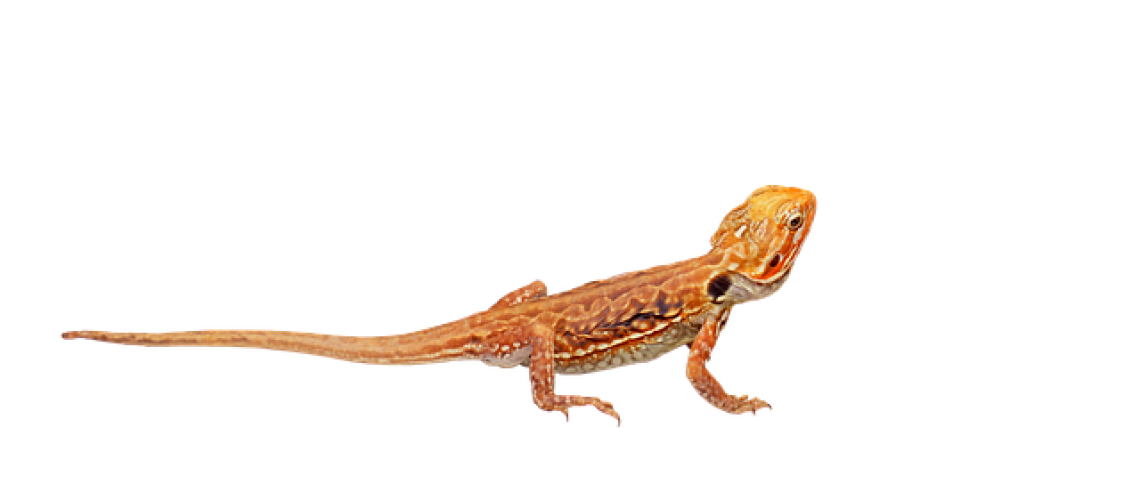Have you ever wondered how big bearded dragons get? You’re not alone! This friendly reptile is often seen as a companion pet, but the size of these lovable creatures varies.
In this article, we’ll explore what factors influence the growth rate and size of bearded dragons, how to measure them, and how to determine their age and size at different stages.
Get ready to learn all about these fascinating creatures!
Key Takeaways
- Bearded dragons reach a length of 16-24 inches on average.
- They can live up to 10 years, reaching their full size within six months.
- Genetic makeup, diet choices, and environment influence the size of bearded dragons.
- Providing a larger enclosure, appropriate heat sources, and a balanced diet with supplements is essential for their growth and health.
Average Size of Bearded Dragons
On average, bearded dragons get to be about 16-24 inches long. They are medium-sized lizards that require a larger enclosure and specific dietary needs for their health and happiness.
Depending on the species, they can live up to 10 years with proper care. Bearded dragons are beautiful creatures that require an adequate amount of space to move around comfortably.
With the right diet and housing size, they can thrive in captivity for many years!
Factors That Affect Size
Size of a bearded dragon can be affected by various factors. Genetic makeup, diet choices, and environment all play a role in determining the size of an individual dragon.
Genealogy research can help determine if the animal is likely to reach a larger size than expected. Additionally, providing adequate nutrition through healthy diet choices can help promote optimal growth.
Lastly, making sure the environment is suitable for their needs can help them reach their full potential.
Growth Rate & Life Span
Bearded dragons typically reach their full size within six months and can live between 8-10 years. They have specific heat requirements and diet plans that need to be followed to ensure a healthy life span.
Here are three main factors that affect the growth rate of beardies:
- Appropriate Heat Source: Bearded dragons require a gradient temperature range with basking spots reaching 95°F (35°C).
- Balanced Diet: A mix of greens, veggies, insects, and occasional fruit should be provided to meet all nutritional needs.
- Proper Supplements: Calcium and vitamin D3 supplements should be given 2-3 times a week for optimal bone health.
Measuring a Bearded Dragon
Measuring your bearded dragon is an important step to ensure they are healthy and growing properly. To accurately gauge the size of your pet, you’ll need a tape measure that’s long enough to span the length of their body.
This will help you track changes in growth as well as identify any potential breeding requirements and diet needs. When holding them for measuring, be sure to support their chest and back area for safety.
You can also weigh them on a digital scale to get an idea of how much they should weigh for their age and size.
Determining Age & Size at Different Stages
Knowing your bearded dragon’s age and size at different stages of life is important for providing them with the best care. Here are some key points:
- Monitor feeding habits to ensure they’re getting the right amount of food.
- Take regular measurements to track their growth.
- Provide the right habitat requirements for their stage in life.
Frequently Asked Questions
What Is the Best Environment for a Bearded Dragon?
Creating the best environment for your bearded dragon requires careful habitat selection and an appropriately sized tank. Choose a space that offers plenty of room to explore, has good ventilation, and can be kept at comfortable temperatures. Offer lots of hiding spots, basking areas, and climbing opportunities. Give them the freedom to bask in their own natural environment!
How Often Should a Bearded Dragon Be Fed?
Feed your bearded dragon high quality food twice a day, such as crickets and vegetables. Vary the diet to ensure they get all the nutrients they need. Follow a regular feeding schedule so your beardie will know when to expect food.
How Often Should a Bearded Dragon Be Bathed?
Bathe your bearded dragon once a week. Keep the water temperature warm and the depth shallow – no deeper than their bellies. Be sure to dry them off afterwards for optimal health and comfort. Enjoy!
What Kind of Substrate Should Be Used for a Bearded Dragon Tank?
When setting up a bearded dragon tank, choose a bedding option that’s appropriate for the size of the tank. Avoid loose substrates like sand since they can cause impaction. Instead, opt for shredded paper, reptile carpet or tile. These are all safe and effective options for your pet’s habitat.
What Kind of Lighting Should Be Used for a Bearded Dragon Tank?
You’ll need UVB bulbs to help regulate your bearded dragon’s temperature and create basking spots, so they can keep themselves warm. Make sure you get the right lighting for their tank!
Conclusion
You now know how big bearded dragons can get and the factors that affect their size. With proper care and nutrition, you can expect your beardie to reach its full potential size of 16-22 inches in length.
Measuring your dragon regularly is a great way to monitor growth and determine age. Knowing the size of your pet will help you provide them with an optimal environment for their needs as they grow.






